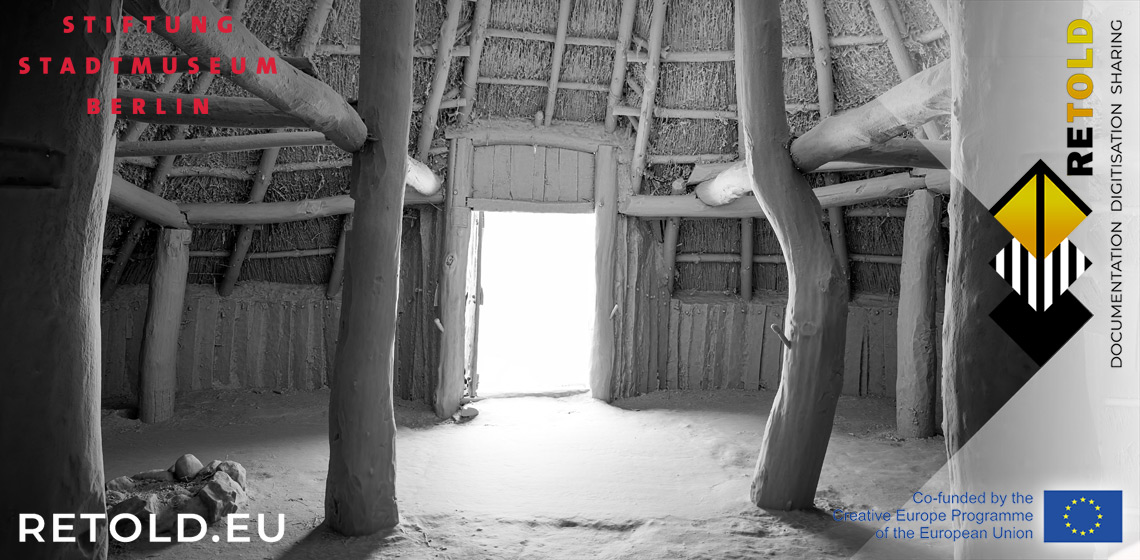The Process
A typical museum
The Steinzeitpark Dithmarschen in Albersdorf (Germany) is a typical archaeological open-air museum. It consists of an outdoor park area of about 40 hectares. This includes archaeological monuments, reconstructed buildings and a museum building with an exhibition of original artifacts. Like in any other museum, the challenge is to save and document information, especially information relating to practical work techniques and craft skills, in a sustainable way for future museum generations.
So, what are the experiences of a smaller museum like the Steinzeitpark Dithmarschen? In our day-to-day business, we have no time to document, digitise and share the stories of our buildings, crafts, and so on. Every step in this process was new for us, starting with the communication and data storage up to the advanced creation of 3D-models of our buildings. We are aware this will make us more robust, and once digital, we can share our stories in various ways, but it is still an effort.
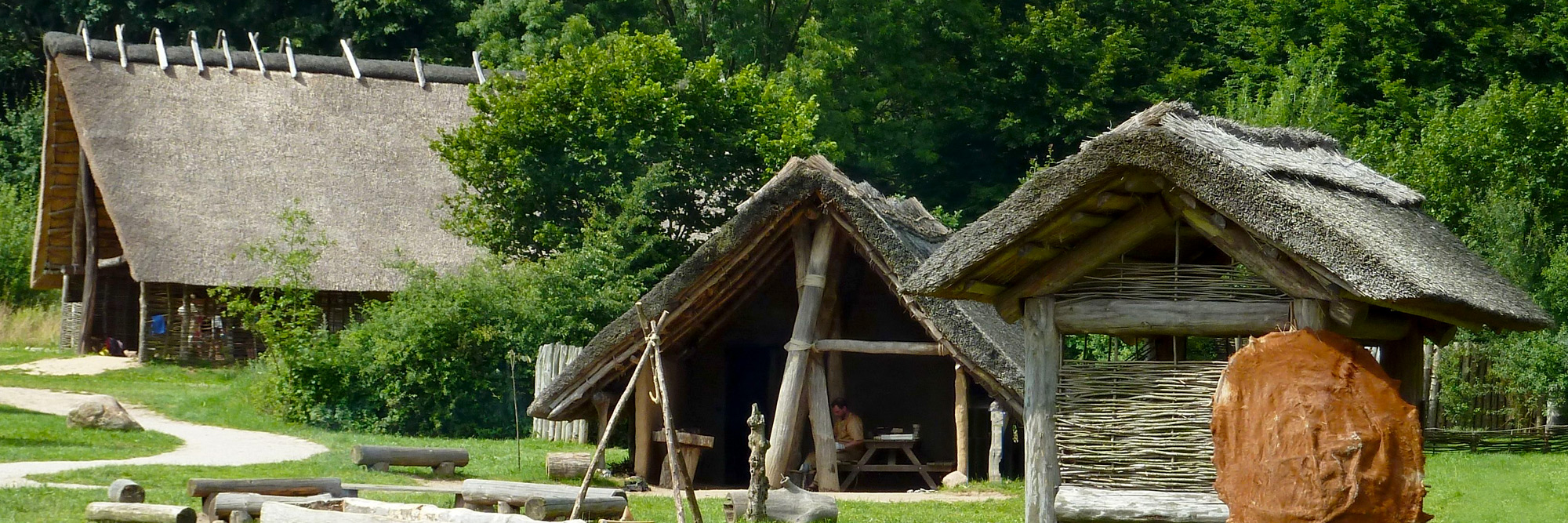
RETOLD's structured approach is divided into two directions: craft activities and buildings.
The heart of RETOLD is structuring what is already there. The three museums had already looked deep into their archives, listing what they knew about their reconstructed buildings and crafts. Based on that, in the years 2022-2023 detailed questionnaires were made so each museum would collect information in roughly the same way.
Once you decided which craft activity to document and for what purpose, you first check what information you may already have from previous activities, what can be easily collected about the craft in general, and if the crafter you have in mind is happy to help with the documentation, before, during and following the activity. This is of immense importance.
The building form shows the way. It is important to check well in advance what is requested by the forms, what is required, and for which audience: your own staff, colleagues, the public, or a combination of those. There are not just a lot of questions for which the answers need to be prepared, in several cases files are needed as well, like photos, or literature references. This preparation phase is all part of the documentation.
Our museum in Albersdorf played an important part in defining what should be documented and what not, but still our staff were a bit shocked when they finally had to start using the questionnaires. The issue was that at that stage, the forms were still being prepared for being programmed into the RETOLD platform, hence they did not exactly fit on a single or even a dozen sheets of paper. One of the forms covered over 400 lines. We know that when the platform is ready, this will be much more user friendly.
Each open-air museum has their own challenges, partly because of differences in size, nature or location and organisational structure. We therefore suggest you set priorities: which craft activities and which buildings are most important? We, the Steinzeitpark Dithmarschen, are representative of maybe half of the open-air museums in Europe: situated in rural territory, not too large and with limited scope, but with a loyal group of volunteers and friends, and providing important value for the region. For a museum like Steinzeitpark Dithmarschen, using digital techniques may pose some difficulties: equipment can be expensive, and staff are not familiar enough with digital techniques.
RETOLD: Unlocking the potential of archaeological house reconstructions by standardizing documentation in open-air museums – experiences from the Museumsdorf Düppel in Berlin, Germany
EXARC Journal Issue 2024/3
... we started to think about how best to go about standardizing the documentation. In the everyday running of the open-air museum, questions on the durability of houses, charred wooden posts compared to plain wooden posts and different roof coverings were posed. Other colleagues working in higher education were also asking these questions... Read more
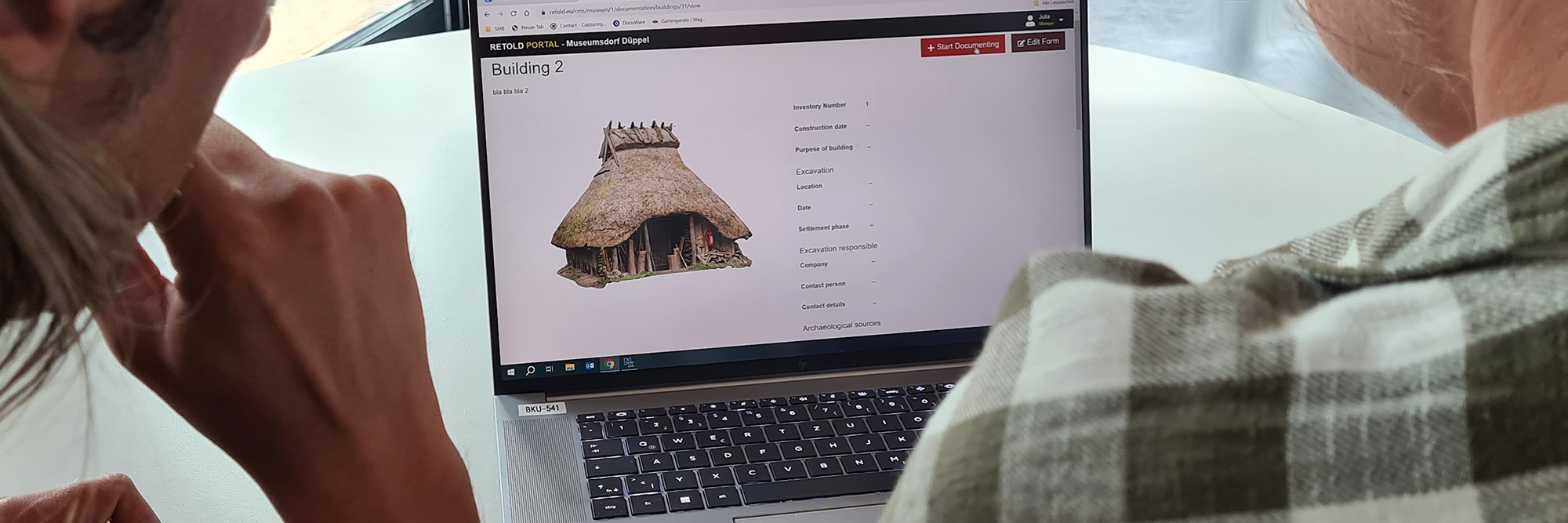
This is not normal
Museum curators usually do not have all relevant computer or digital skills to achieve the digital outcomes required, so they rely partly on other specialists. Our aim is to ensure that museums have the basic skills, partly to estimate what is realistic and what not.
We started with video specialist Eva Götting explaining our open-air museums how to create simple videos, from start to publication on social media. Those workshops on short video editing were online because of the pandemic back then. We focused on getting staff members and volunteers at ease with camera, filming, and the basics of editing.
We then continued on the path of making sure the museums would have the relevant in-house experience with producing digital content. For this purpose, Nuwa Ltd developed guidelines for museum craft videos, and executed three workshops at the museums about working with drones, filming, getting photogrammetry right, and on how to produce 3D models.
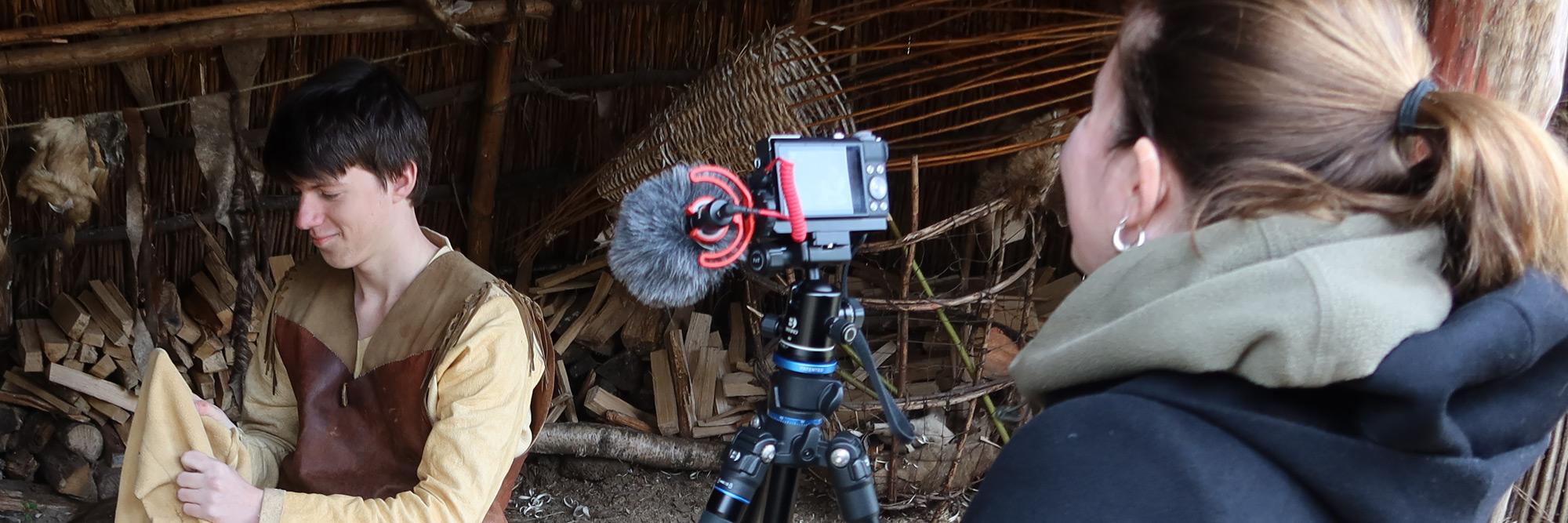
We were happy that we were not alone in this and had similar experiences to the other two museums. Still, a lot of progress was made in self-education, step by step with the trial-and-error-method (of course using digital tutorials). We were lucky to have some young adult volunteers who were eager to explore the technology and to find solutions. They work closely together both with our employees and members of our friend’s association, so we ensure continuity in the process.
Craft Video
A craft only survives by doing it. Paper documentation itself is only a support. As a craft cannot be caught in words, a video is a good aid for understanding the information you collect in the documentation. Make sure, you discuss every stage of the craft activity with the crafter in advance, so you know what you should be filming. For this purpose, we suggest a script which you may find here. The video should best be in the native language, subtitles can be added afterwards.
Watch samples of the videos made by RETOLD partners:

During the RETOLD conference at Steinzeitpark Dithmarschen (September 2023), Nuwa Ltd continued their series of photogrammetry training sessions for museum partners who want to digitally capture their museum inventory.
You start by learning how to take suitable photos. These are then processed in commercial or open-source stitching software, which “reads” the visual features in the photos and reconstructs the camera angles from which the photos were taken. The resulting point cloud can then be further processed into a textured 3D mesh.
Challenges we faced were:
- Real life is complex. From mesolithic shelters to 2-storey farm houses, musuem buildings rarely have straight edges and smooth surfaces. To make sure that the 3D software recognises every feature, you need to take 500-800 photos. Markers are often placed along the entrances of buildings to help the software distinguish the interior and exterior of the building.
- Bad light, and monochrome surfaces. Lighting in prehistoric and historical buildings can pose a challenge for photo cameras - and everything is in shades of brown! For photogrammetry, sharp photos are needed, rich in detail and low in noise such as grain or camera shake. To help light the interior of buildings, LED panels are particularly useful, as they give an even light, can be colour-controlled and can be battery-powered, which works well on more spread-out museum properties.
- Fitting software for smaller museums. Larger museums can gain access to educational or public licenses to commercial software. In smaller museums, individuals may choose to access it on private accounts. As an alternative, open-source or free software is also available, but may not be as easy to use.
It is important to plan this together with the staff or volunteers who will be digitising the objects. Equally important is documenting the process, so that the work can be shared.
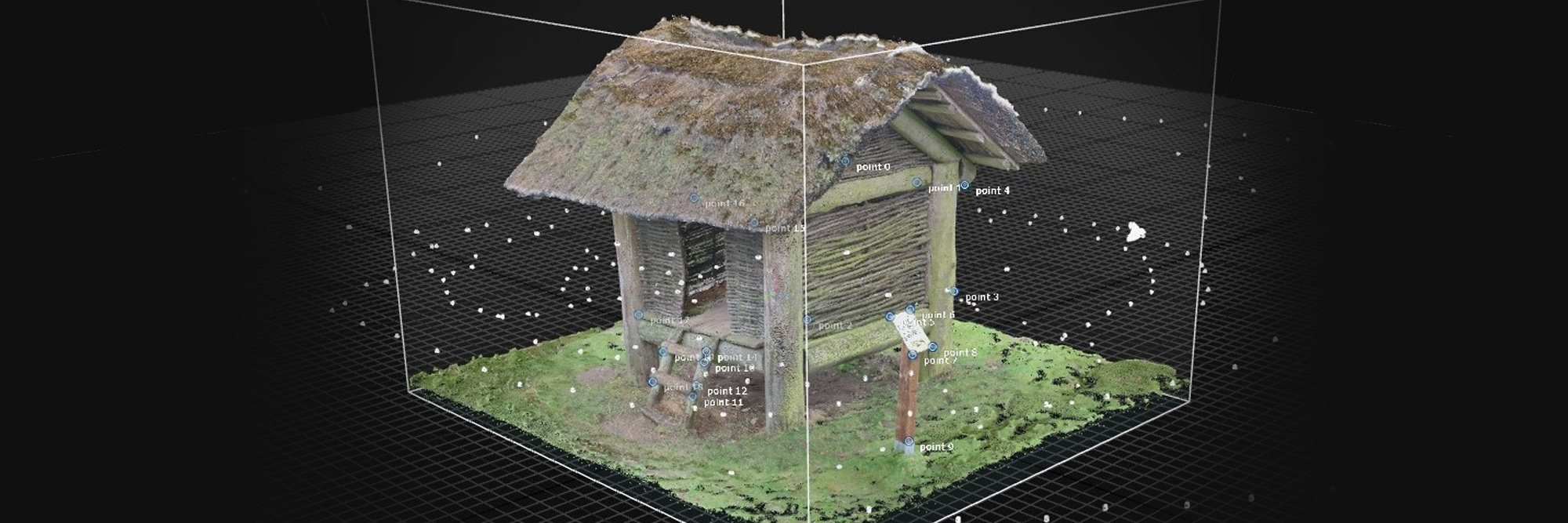
3D Models of the buildings
You need to take a whole lot of photos in a systematic way, preferably using only one camera, under stable circumstances (so do not record a bit today, and the rest next week). But what about the roof? You can take a drone to take pictures from above, to construct the roof in the models. Otherwise, there are open holes in the roofs and ceilings of the model. There is a lot of planning involved, about how detailed the model should be. And what about items standing around the building like quern stones, pots, and tools? You can learn more about this subject here.
At first we thought that having digital 3D house models was something for nerds only. But that was until we realised what you can do with them. It works as a perfect stage for sharing information about a building, whether you are standing inside it or if you are anywhere else in the world. We did not have the necessary equipment, like a camera, a good computer or even the software. Technology develops very fast, and most current digital cameras are sufficient for making photos for a 3D model.
Conclusion
This case study shows how techniques of today are within hand reach of each and every museum. For open-air museums, the stories we present are touching the core of our collection. Having these documented in a structured way makes them future-proof. These facts we can reuse in different scenarios, time after time, bringing one message today, and another tomorrow, depending on the context and the audience.
The stories never end, techniques change, and our museums will remain relevant.
Saving our most important stories and details of our museum is certainly not an easy journey and we are not there yet. But it is worth it. We hope that sharing some of our experiences helps others. Most importantly: do not do this alone: there are too many aspects involved, and we have not met anybody who masters all, both from the museum and the technical side. Without the practical and technical help and inspiration of the other RETOLD partners it would have been very difficult to be part of such a digitalisation project.
After exploring all different aspects of documentations and the methods, as well as setting our goals and wishes, we started to work on the App for the documentation.
Read about creating and testing the app(s).
This is partly based on:
Rüdiger Kelm, Roeland Paardekooper, 2024. RETOLD: Experiences in a Local Museum with Digital Documentation – The Stone Age Park Dithmarschen in Albersdorf (Germany) as a RETOLD Partner, EXARC Journal Issue 2024/2, https://exarc.net/ark:/88735/10748.


